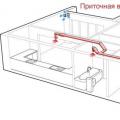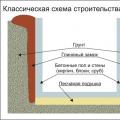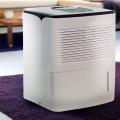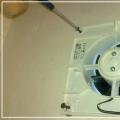Air humidity not only affects the furniture, floor and other elements of the room, but also the health of residents. Not only the state of comfort in the house depends on humidity, but also the appearance of various kinds of diseases.
Allergic rhinitis, bronchial asthma, acute rhinitis - all this can be the consequences of excess moisture content in the air. Dry air flow also does not have a positive effect, as a result of its influence, sinusitis may appear, and sinusitis “likes” such an atmosphere.
What should be the humidity in the room? Normal indoor humidity is the key to good health.
Due to the lack of moisture, the immune system worsens, fatigue increases, “sand” is felt inside the eyes, and the skin begins to age rapidly. Children do not tolerate constant changes in humidity, and for newborns this is a serious danger.
The mucous membranes of the respiratory tract in children, becoming dry, can contribute to the development of infections, an allergic reaction. The child may have a runny nose along with blood. Once it occurs, treatment may not be effective.
Factors Affecting Humidity
Weather and climate, the season, the functioning of household appliances, human activity - these are the factors that affect the humidity in the air.
The situation becomes critical when the heating season comes. Frosty air contains a small amount of moisture. One airing inside the apartment will not help to eliminate this problem.
Central heating and the operation of heaters in general can worsen the situation.
Moisture levels can drop by up to 25% due to desiccation. The mucous membrane of the nasopharynx of an adult takes this indicator as 35%. The child seems to be 50%. During the summer period, the air inside the machine becomes dry due to the operation of the air conditioner.
What should be the rate of moisture in the air?
What humidity should be in the room? This question is very important. Comfortable humidity in the room for a person is different. According to most opinions, the humidity standard is 45%.
But moisture should vary in the region of 30-60%, and it depends on the room, or rather on its purpose:
- Inside the dining room, this figure should be 50-60%.
- The average in the adult bedroom is 45%.
- Inside the children's room - 50-55%.
- The percentage inside the cabinet is 40.
- The average level in the kitchen or bathroom is 50%.
It is very difficult to maintain such a state of moisture in the room. In modern apartments and houses, most of the year, the level of air moisture is quite low. Because of this, a living person in such a room can cause drowsiness, and performance decreases.
Dry airflow can cause the body to cool down as it evaporates from the skin. The skin, in turn, cools the human body.
In the dry air stream, static electricity accumulates and dust easily rises.
Achieving the optimal level of moisture is a mandatory procedure in the room where the children are. Therefore, it is imperative to purchase an additional humidifier.
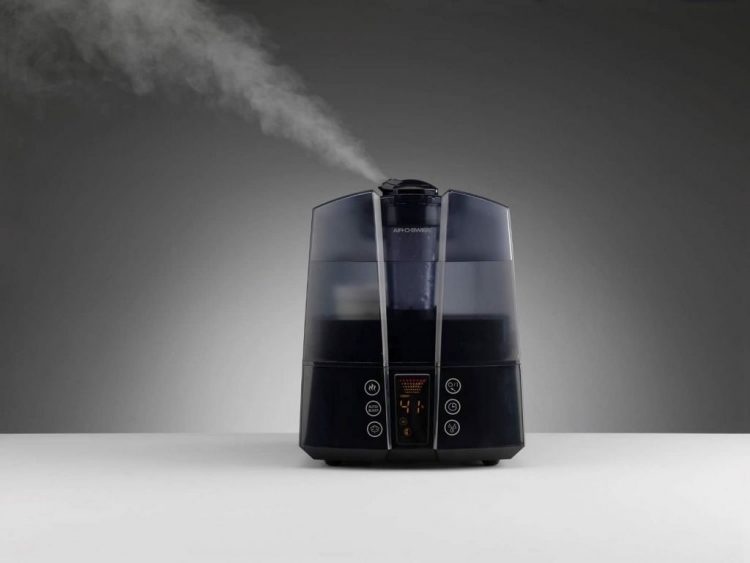
To achieve the norm of moisture, it is necessary to control it, as well as take all necessary measures.
Air humidification methods and control
We have already considered the necessary indicators. In order not to deviate from them, you need to use methods that will help maintain balance. Let's consider these methods in more detail.
Heating during the winter season can dry out the air, causing indoor discomfort. Also because of this, wooden products may deteriorate, cracks may appear in them.
To improve the quality of moisture content, it is necessary to install the humidifier where you spend the most time. During the summer period, depending on the climate in your area, the moisture content may be low and vice versa.
The following measures need to be taken:
- It is important to constantly ventilate the room. This is quite simple to do, but high efficiency cannot be achieved due to this. During the summer period, there is not much moisture in the air, so ventilation is not the way to go. And in winter, ten minutes of airing is enough to achieve the necessary moisture. The windows should preferably be wide, since in this short period of time the air will be able to renew itself. An open window clock will not have this effect.
- Increasing the number of indoor plants. They are not only "humidifiers" of the room, but also help to determine the level of humidity. If the plant is shriveled and has dried leaves, then the air in the room is too dry. In addition to moisture, plants can produce substances of organic origin that clean and disinfect the surrounding space.
- Aquarium. It would seem that an aquarium is considered an ordinary decorative element, but its effect on maintaining moisture levels is invaluable. It is only necessary to constantly add water, which evaporates.
- Wet cleaning. It can be done in the morning or evening.
- Finding indoor water containers. They are recommended to be placed on window sills where central heating radiators are located.
To increase moisture, a number of procedures can be carried out. One of these procedures is in the apartment. Or gender. Or even waterproofing an apartment in a new building.
Evaporating water is a great way to humidify the airflow. But this is not entirely hygienic and aesthetically pleasing.
What needs to be done in order to independently find out the level of humidity in the room? To do this, it is important to control the microclimate and the level of moisture.
What is used to measure the humidity in the air at home? For this, it is used, which is called a hygrometer.
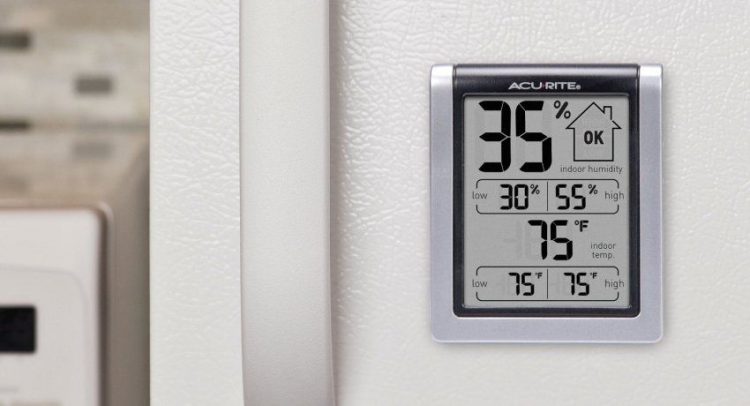
At the moment, there are various types of this device, which have a different principle of operation. They may be small. The scoreboard can be mechanical or electronic. The device may additionally have a thermometer.
The main thing for a hygrometer is the accuracy of its readings. The maximum error is 1%. But modern electronic devices give almost the most accurate readings.
These devices should be installed where there are no drafts.
If you do not have this device, then to measure the level of moisture, you will need an ordinary glass of glass and water. So, you just need to draw cold water into the inside of a glass cup, after which it must be put in the refrigerator. The water temperature should reach 4-5 degrees Celsius.
The glass must be located where there are no heating sources.
Watch:
- if the condensate dries in about ten minutes or less, the air is very dry;
- if after the same period of time the condensate becomes large drops, and they begin to drain, then this means an excess of moisture;
- normal humidity in the room when the condensate after the same ten minutes did not have time to dry and did not begin to drain.

A glass glass and water is an excellent “hygrometer”, only made by yourself with your own hands. This method will help determine the humidity in the room.
An ordinary mercury thermometer can be used as a meter. But the measurement process is quite laborious.
It can be divided into two stages:
- First, the temperature is measured and recorded.
- Next, the thermometer head is wrapped with wet cotton wool. It should be left for ten minutes. Then the temperature must be measured again.
To determine the "dry" or "wet" temperature, you must use a specially designed temperature.
Therefore, it is best to purchase a modern electronic hygrometer, which will give the most accurate readings.
So, in order to control the humidity of the air inside the room, it is important to set goals. Such goals are: creating a comfortable atmosphere, preventing the development of diseases and infections, ensuring safety, and waterproofing.
Control can be carried out using improvised means, or you can use a specially designed device. It will help you cope with the problem, ensuring maximum comfort indoors.

